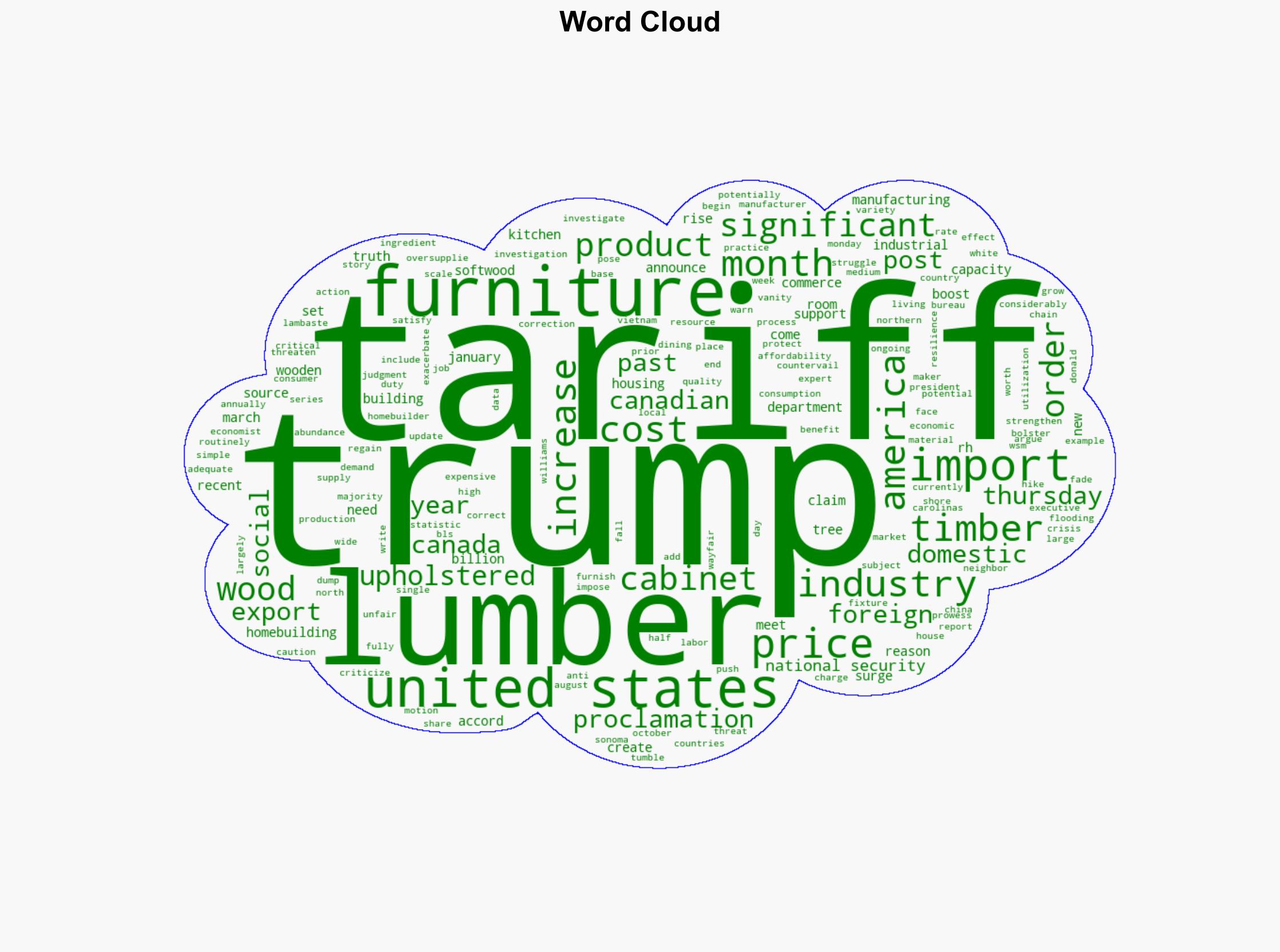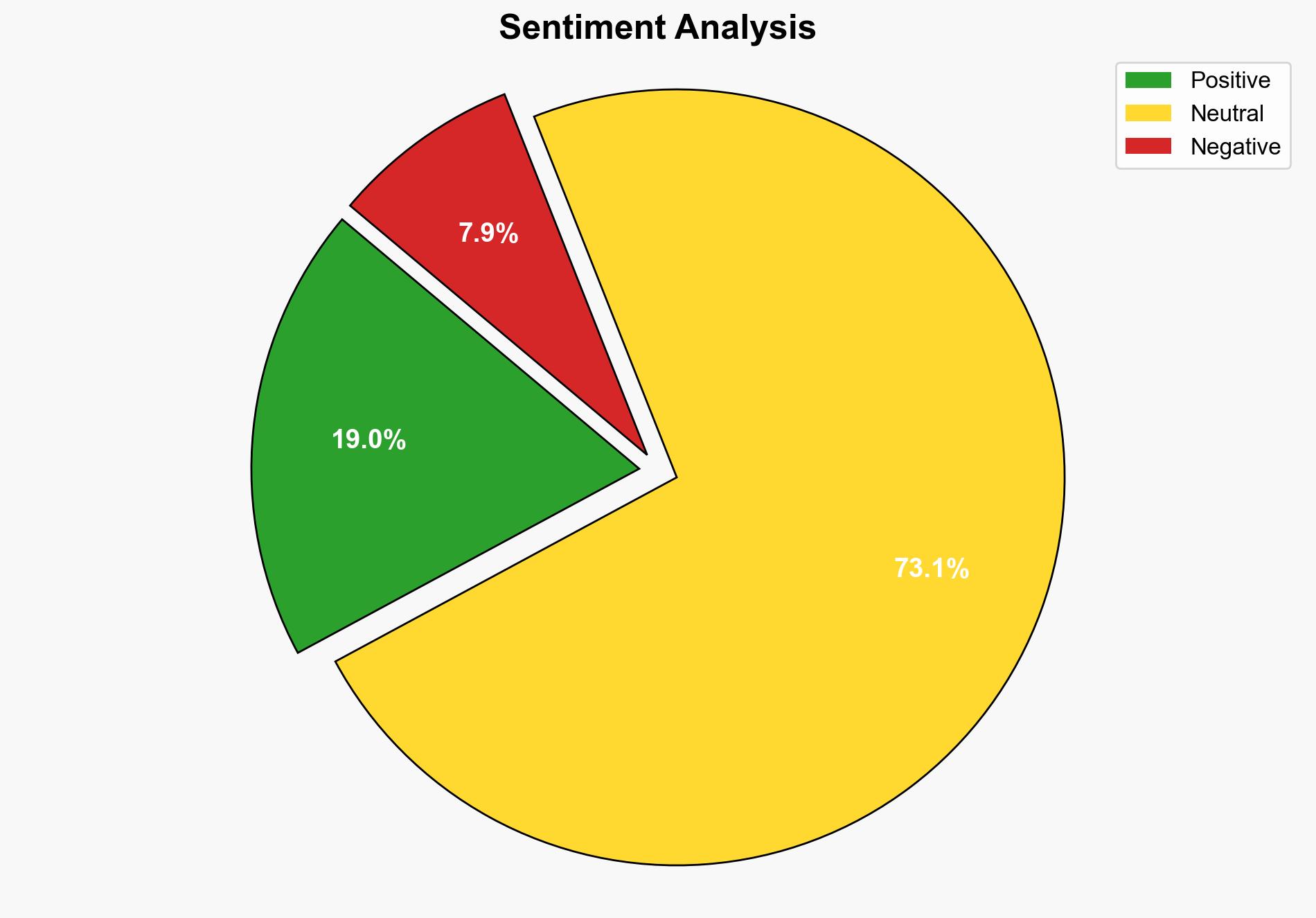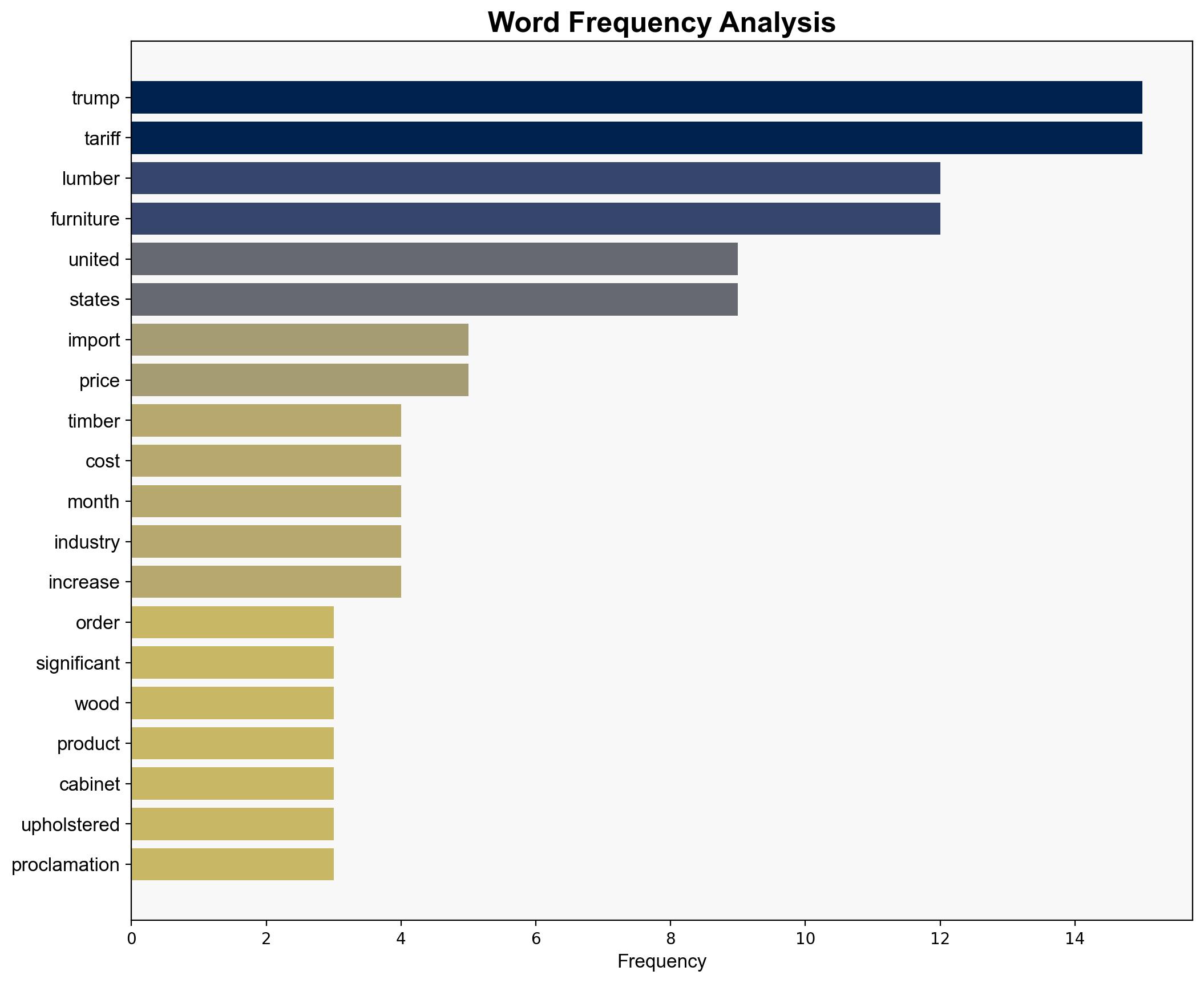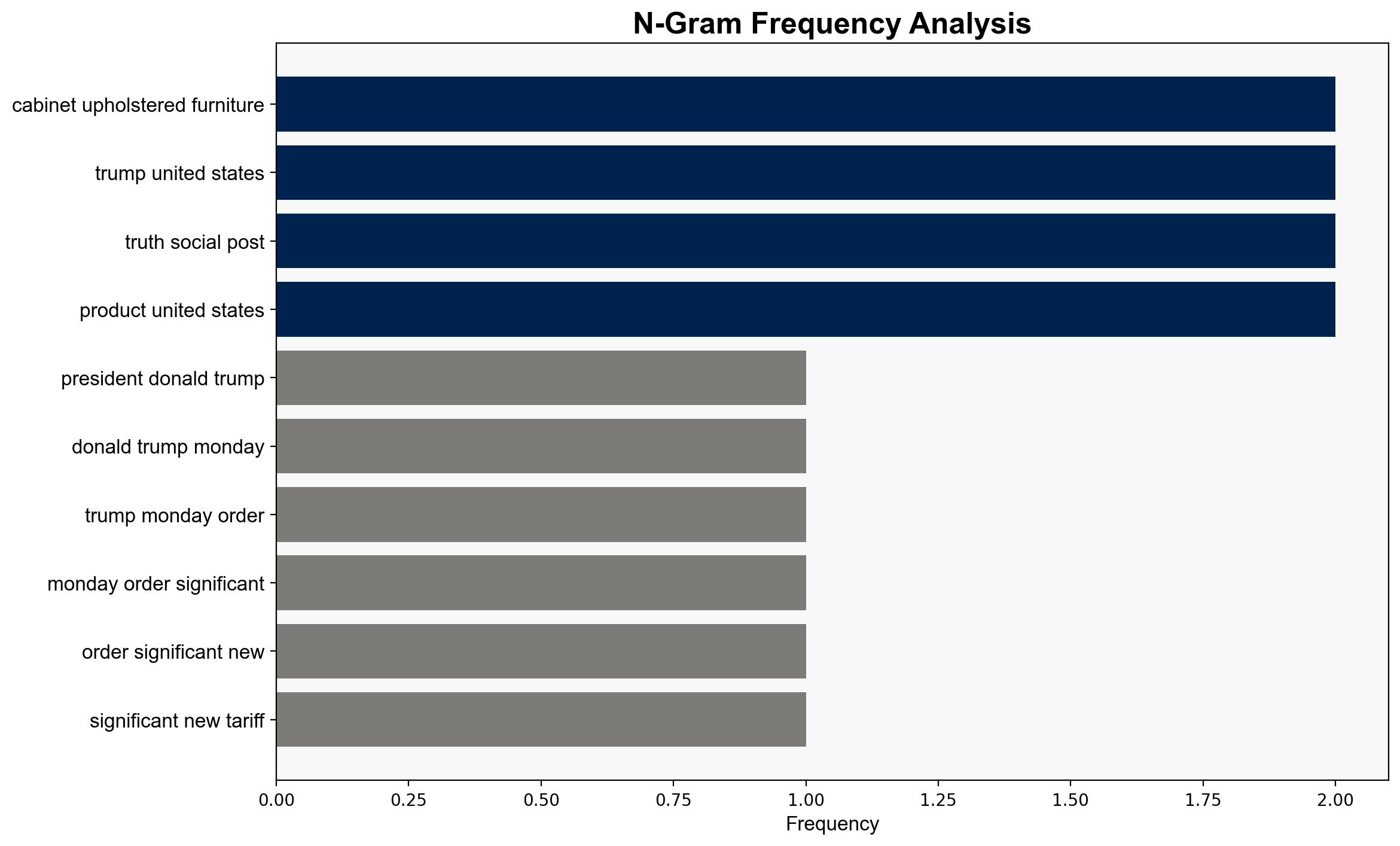Trump places a 10 tariff on lumber and a 25 tariff on furniture and cabinets CNN Business – CNN
Published on: 2025-09-30
Intelligence Report: Trump places a 10% tariff on lumber and a 25% tariff on furniture and cabinets CNN Business – CNN
1. BLUF (Bottom Line Up Front)
The introduction of tariffs by Donald Trump on lumber and furniture is likely a strategic move to bolster domestic industries and address perceived national security threats. The most supported hypothesis is that these tariffs aim to protect and stimulate U.S. manufacturing, though they may inadvertently increase consumer costs and exacerbate housing affordability issues. Confidence level: Moderate. Recommended action: Monitor economic indicators and industry responses to assess the tariffs’ impact on domestic production and consumer prices.
2. Competing Hypotheses
1. **Hypothesis A**: The tariffs are primarily intended to protect U.S. industries and jobs by reducing dependency on foreign imports, particularly from Canada, and to enhance national security by strengthening domestic supply chains.
2. **Hypothesis B**: The tariffs are a political maneuver aimed at gaining support from domestic manufacturers and constituents in key industrial regions, with national security concerns being a secondary justification.
Using ACH 2.0, Hypothesis A is better supported due to Trump’s explicit statements linking tariffs to national security and industrial resilience, as well as historical patterns of using tariffs to protect domestic industries.
3. Key Assumptions and Red Flags
– **Assumptions**: It is assumed that increased tariffs will lead to a significant boost in domestic production capacity and job creation. Another assumption is that the tariffs will not severely disrupt U.S.-Canada trade relations.
– **Red Flags**: The potential for increased consumer costs and housing affordability issues is a significant concern. There is also a lack of detailed analysis on the long-term impact on U.S. manufacturing capabilities.
– **Blind Spots**: The impact on international trade relations and potential retaliatory measures by Canada or other affected countries is not fully addressed.
4. Implications and Strategic Risks
The tariffs could lead to increased costs for homebuilding and furniture, impacting consumer spending and potentially slowing economic growth. There is a risk of escalating trade tensions with Canada, which could affect broader economic and diplomatic relations. Additionally, the tariffs may not achieve the intended industrial growth if domestic capacity cannot meet demand.
5. Recommendations and Outlook
- Monitor economic indicators such as housing prices and consumer spending to assess the tariffs’ impact.
- Engage in diplomatic discussions with Canada to mitigate potential trade tensions.
- Scenario Projections:
- Best Case: Tariffs successfully stimulate domestic production and job creation without significant consumer cost increases.
- Worst Case: Tariffs lead to trade disputes, increased consumer costs, and minimal impact on domestic production.
- Most Likely: Tariffs provide moderate support to domestic industries but increase consumer costs and strain U.S.-Canada relations.
6. Key Individuals and Entities
– Donald Trump
– U.S. Commerce Department
– Canadian government
7. Thematic Tags
national security threats, economic policy, U.S.-Canada relations, trade tariffs




